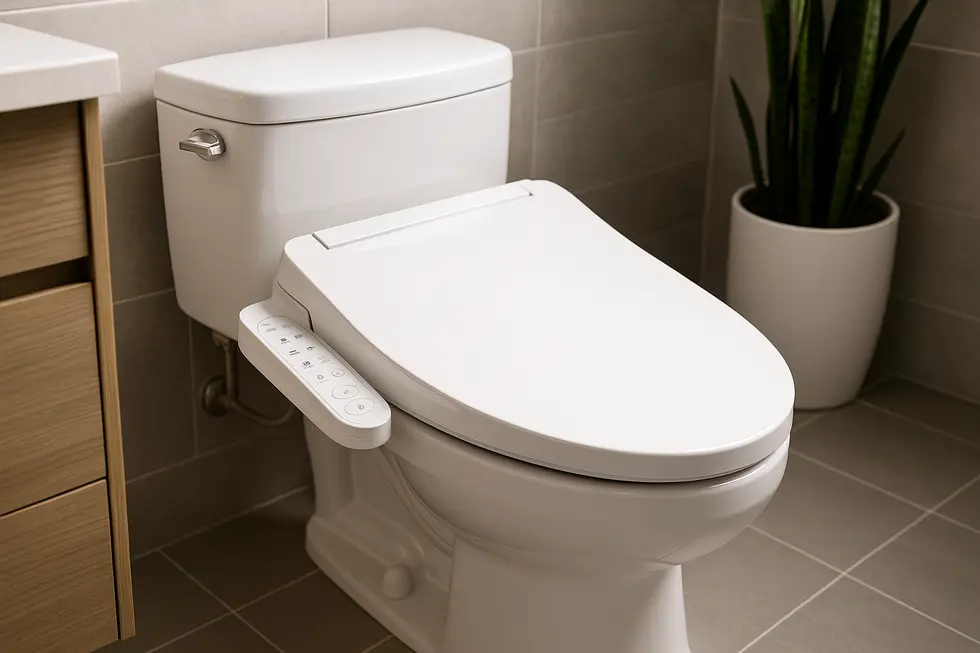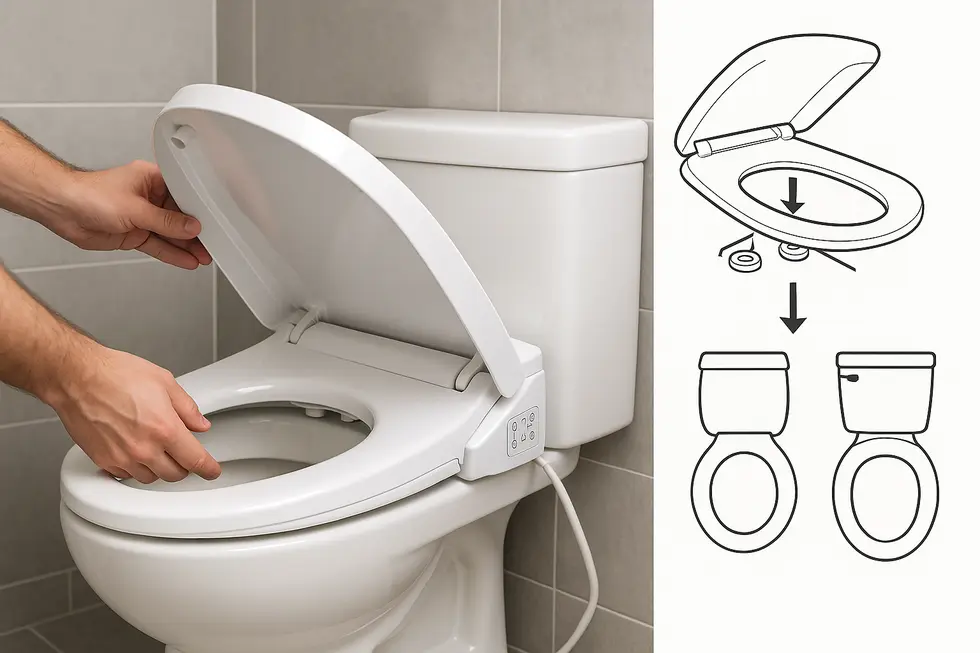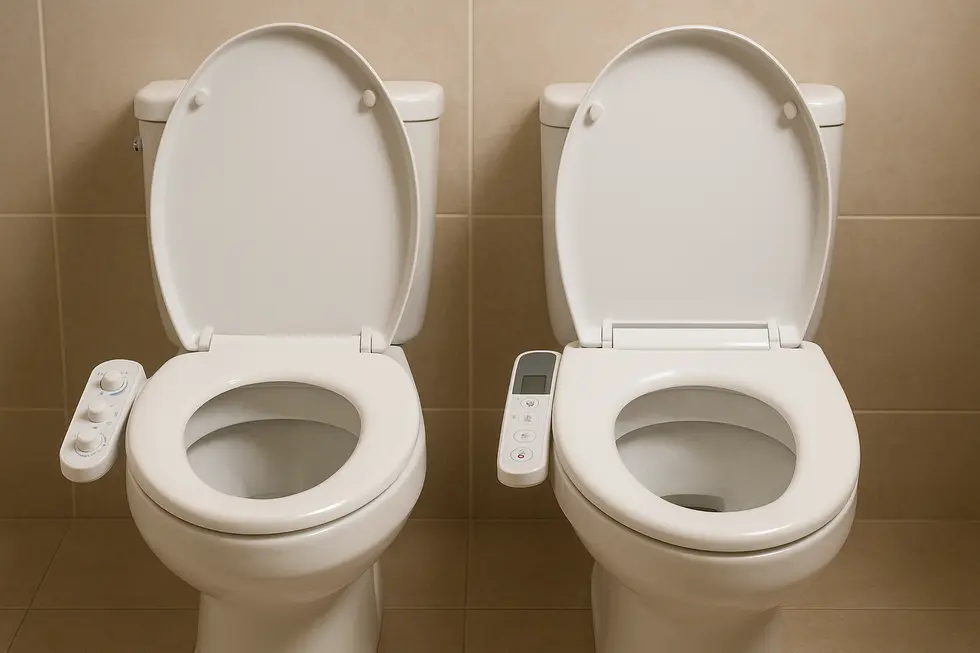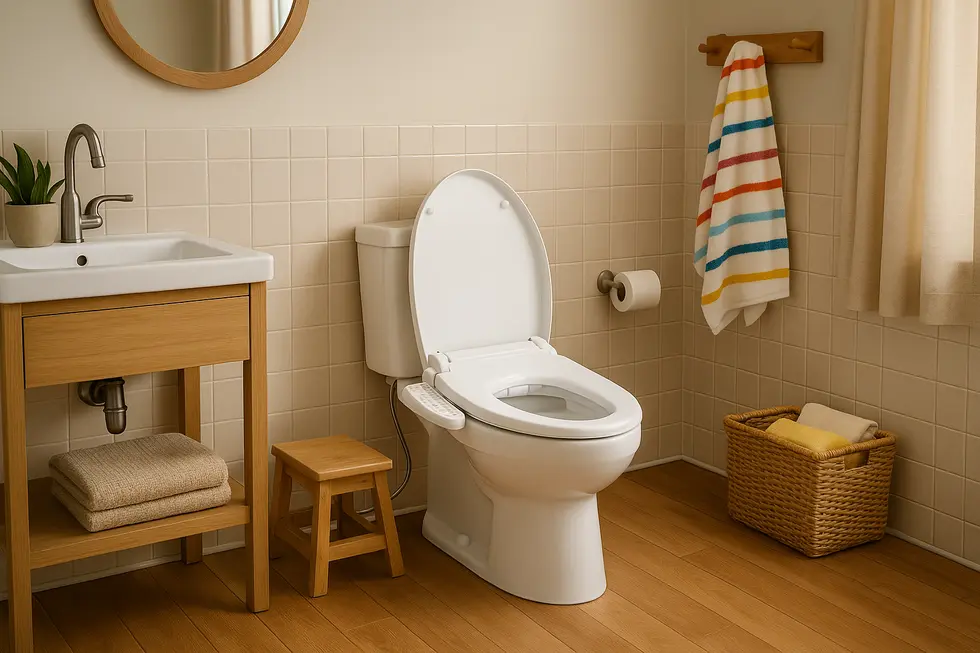Bidet Attachment, Bidet Seat
Discover the Perfect Bidet-Compatible Toilet Seat for Your Family
Choosing the perfect toilet seat compatible with a bidet involves more than just matching shapes. As families look to enhance their bathroom experience, technological innovations, installation ease, and the choice between electric and non-electric options become crucial. This article explores these aspects in detail, ensuring you make an informed decision that blends comfort with functionality.
From Warm Water to Wireless Remotes: How Modern Engineering Elevates Bidet-Compatible Toilet Seats

Comfort once meant little more than a stable lid, yet today’s bidet-compatible toilet seats showcase a symphony of micro-pumps, sensors, and eco-logic that quietly transform the daily routine. The most striking advance is the fully adjustable wash. Internal turbines modulate pressure while step-less motors slide stainless-steel nozzles along several positions, creating everything from a broad, soothing rinse to a precise, therapeutic jet. Each user, regardless of mobility or anatomy, can fine-tune temperature, angle, and strength in seconds.
Engineering teams did not stop at water. Thin carbon film heating elements now warm the seat itself and the water pathway instantaneously, removing the bulky reservoirs that once made bidet seats cumbersome. By heating only what is used, these systems trim electricity draw and allow slimmer profiles that sit flush with either elongated or round bowls.
After cleansing, integrated air dryers finish the job. Variable-speed fans pass air across ceramic heaters, gradually lowering temperature so skin never feels scorched. Simultaneously, a catalytic deodorizer pulls odors through a replaceable carbon block, keeping the bowl area fresh without perfumes.
All of these features revolve around smart control. A wireless remote—often magnetically docked on the wall—stores custom presets for multiple family members. Infrared seat sensors wake the unit when occupied and prevent accidental sprays, while soft LED nightlights guide half-awake visits without blinding overhead fixtures. Maintenance is equally thoughtful: nozzles rinse themselves before and after every cycle, and quick-release hinges let the entire seat lift off for deep cleaning in moments.
For households seeking sustainability, non-electric models mirror many of these innovations by harnessing household water pressure. Though they forego warm air and nightlights, they still deliver precise, hygienic cleansing while reducing toilet-paper consumption by up to 80 percent—a benefit explored in our overview of the benefits of bidet toilets.
Whether powered or mechanical, today’s bidet-ready seats demonstrate how discrete technology can serve both body and planet. Detailed sizing guides and DIY installation kits, such as those found in BidetKing’s bidet seat collection, ensure that innovation is only a few screws away from any standard bowl.
Fitting Form to Function: Getting Shape and Installation Right for a Bidet-Ready Toilet Seat

Match the bowl before anything else. A bidet seat is engineered to sit flush against porcelain, so the relationship between seat and bowl must be exact. Measure from the center of the mounting holes to the front lip: roughly 16.5 inches signals a round bowl, while about 18.5 inches reveals an elongated profile. Confirm width and the spacing between the two mounting holes as well; most modern toilets use the standard 5.5-inch spread, yet a quick measurement prevents wobble later.
Once shape is settled, installation becomes a satisfyingly simple sequence. Shut the supply valve, flush to empty the tank, and unscrew the existing seat. The bidet seat’s mounting plate drops over the holes, and the provided bolts hand-tighten first, then snug up with a screwdriver. Do not overtighten—a small amount of play helps the quick-release mechanism glide in and out for cleaning.
Next, route water. Mechanical seats tee off the cold-water line using the included adapter. Wrap threads with Teflon tape, hand-tighten, then finish with a quarter-turn of a wrench to seal. Electric models demand one extra consideration: outlets. Because code discourages extension cords near water, verify a grounded GFCI receptacle sits within four feet of the tank. If it doesn’t, budget for a licensed electrician before ordering the seat.
Installation nuances multiply with one-piece or skirted toilets. Some have recessed bolt channels that block the standard hardware. Low-profile brackets or top-mount bolts usually resolve the issue; check the seat’s parts list before purchase. Add-on bidet attachments slip under your existing seat instead of replacing it entirely, a useful workaround when the household isn’t ready to give up a padded or decorative seat. For a walkthrough of that approach, see this guide on how to add a bidet to your existing toilet.
Finally, test for leaks, adjust nozzle alignment, and sit. A properly sized and securely mounted bidet seat feels like it was born with the bowl, delivering comfort and hygiene without creaks or cold surprises. For further sizing charts and hardware compatibility notes, browse the reference library at BidetKing.
Power or Pure Pressure? Choosing the Right Bidet-Ready Toilet Seat

Electric or non-electric—the choice shapes daily comfort, installation effort, and even your utility bill. Non-electric bidet seats harness household water pressure, so there is no need for outlets, extension cords, or bulky control boxes. A simple lever or dial directs ambient-temperature water through self-cleaning nozzles for rear and feminine wash. Because the seat shares the same bolt pattern as any round or elongated bowl, snapping it in place often takes less than ten minutes. Without heaters or pumps, these seats weigh less, cost less, and, importantly, keep standby energy consumption at zero. If you are equipping a rental, outfitting a guest bath, or chasing the most eco-friendly route, this minimalist path delivers reliable hygiene while trimming both purchase price and future electricity use. For an expanded look at non-electric bidet setups.
Electric models step things up—literally warming every contact point. An internal heater mixes incoming water to your chosen temperature and circulates it through stainless-steel or antibacterial plastic wands. The moment you sit, sensors activate a pre-heated seat; after cleansing, a warm-air dryer wafts away residual moisture. Many units tuck LED night lights under the rim and store preferences in user profiles controlled via a side panel or remote. All that comfort requires a grounded GFCI outlet within about four feet of the tank. In older bathrooms, that may mean hiring an electrician or threading an extension cord behind cabinetry—costs and compromises worth noting before checkout.
While both options install on the same two mounting holes, measuring your bowl remains rule one: an elongated seat will overhang a round rim, and vice versa. Rule two is water-supply access. Non-electric seats connect to the cold line with a T-valve; electric seats split that same line but add a power cord. From a budget perspective, non-electric seats usually sit at the entry level, whereas fully loaded electric versions can rival the price of a new porcelain fixture.
Choose according to priorities. If sustainability, simplicity, and low upfront cost top the list, non-electric wins. If year-round warmth, hands-free drying, and hotel-suite luxury tempt you, an electric seat will feel like a daily upgrade.
Final thoughts
Choosing the right bidet-compatible toilet seat can significantly enhance your family’s bathroom experience by combining modern technology, simple installation, and suitable power preferences. Whether you opt for advanced electric features or a straightforward non-electric model, a well-matched toilet seat will bring comfort and hygiene to your home.
Experience a new standard of clean with PEGABidet—designed for comfort, safety, and independence. Join thousands who trust us to make personal care simple and dignified. Contact us at contact@pegabidet.com
About us
PEGABidet is a brand owned by L.A NEXTGEN LLC, based in California. We design intuitive, hygienic, and accessible bathroom solutions that prioritize safety, dignity, and independence. Our mission is to make personal care effortless and empowering for people at every stage of life.

